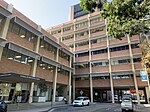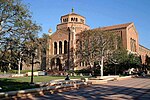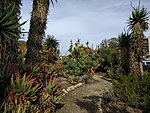UCLA Meteorite Collection
AC with 0 elementsCalifornia museum stubsGeology museums in CaliforniaMuseums in Los AngelesNatural history museums in California ... and 4 more
Science and technology in Greater Los AngelesUniversity museums in CaliforniaUniversity of California, Los AngelesUse mdy dates from March 2020

The UCLA Collection of Meteorites is one of the largest meteorite collections in the United States. The collection of meteorites began in 1934 when William Andrews Clark, Jr. donated a 357 lb (162 kg) fragment of the Canyon Diablo meteorite, now known as the Clark Iron. Over time, the collection grew to include over 2400 samples from about 1500 different meteorites. They have forty mostly complete meteorites. A museum exhibiting 100 specimens from the larger collection opened to the public in 2013, with a grand opening in January 2014.
Excerpt from the Wikipedia article UCLA Meteorite Collection (License: CC BY-SA 3.0, Authors, Images).UCLA Meteorite Collection
Charles E Young Drive East, Los Angeles Westwood
Geographical coordinates (GPS) Address Nearby Places Show on map
Geographical coordinates (GPS)
| Latitude | Longitude |
|---|---|
| N 34.069 ° | E -118.441 ° |
Address
Slichter Hall
Charles E Young Drive East
90095 Los Angeles, Westwood
California, United States
Open on Google Maps








